Volunteer E2E Quilting Design

Volunteer is a simple, uncomplicated edge-to-edge quilting design meant to create an interesting and bold texture.
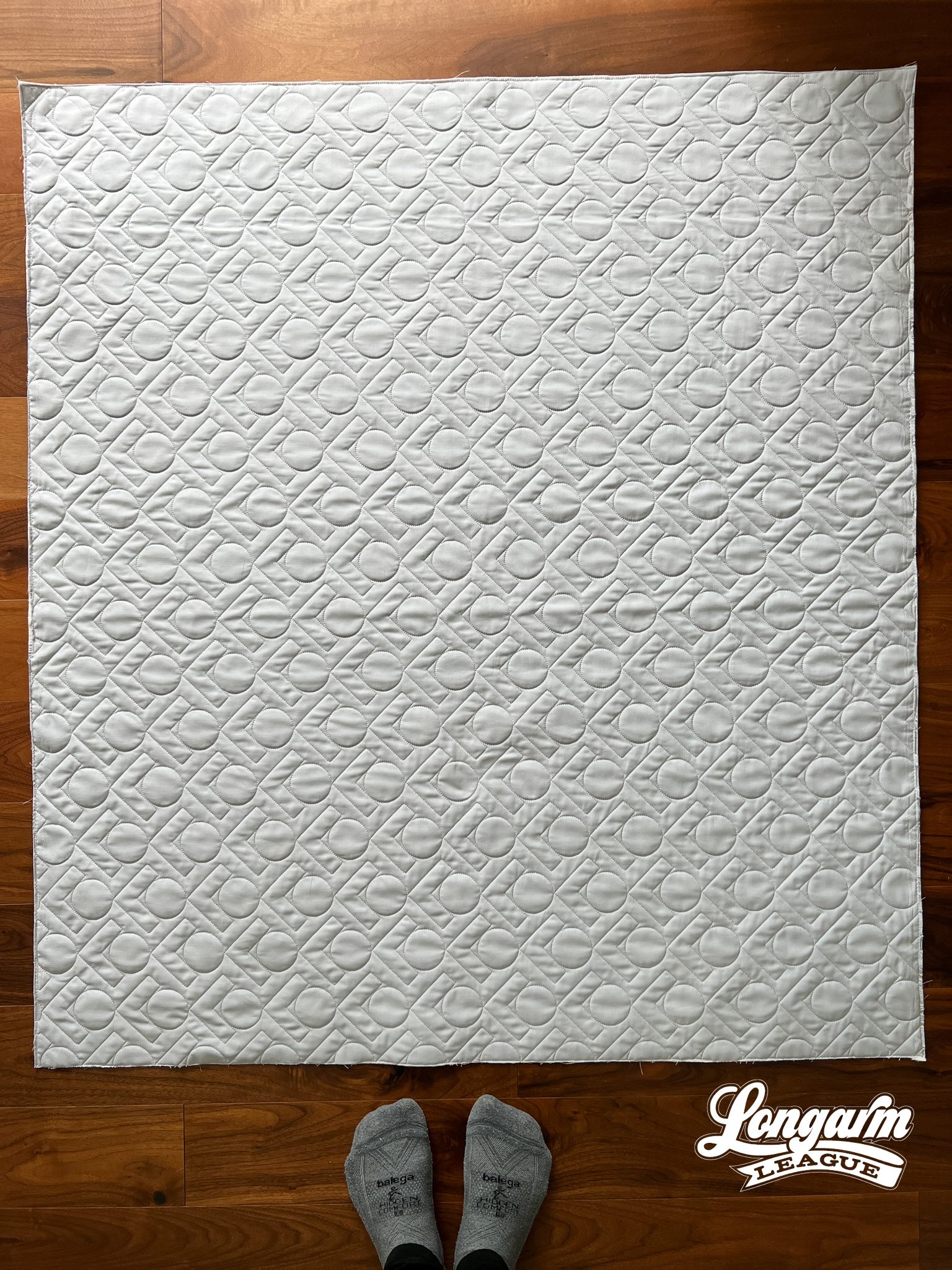
In fact, 'Bold' was the working title of this design as I was saving and re-saving different options along the way. I also briefly considered naming it Lots of Love, but thought that might be too confusing. It looks a bit like LOL, and in the early days of the Internet, people on message boards couldn't decide if LOL stood for Laugh Out Loud or Lots Of Love. 

In the end, I thought Volunteer works as a name because it looks like a person raising their hand. And I like one word names that haven't already been used for other E2E designs.
I think this quilting design would be great for modern-looking, geometric or graphically bold quilt patterns or fabrics. Or perhaps a child's quilt!


Here are the specifications for how I set up this design using my Intelliquilter on a baby-sized quilt sample (40" x 50" quilt size):
Row height: 2.797"
Gap: -0.743"
Pattern ...
Meet Sara Korinek of Stitch Lab Quilting

Each month in the Longarm League, we hold a coaching call with one of our members to talk about their business. This month I sat down with Sara Korinek of Stitch Lab Quilting. Sara is a lifelong learner and entrepreneur at heart, with a wide-ranging background in retail and business management. We had a great discussion about her experience in running several small businesses over the course of her career, including a custom bag-making business, bike shops, and now longarm quilting! We also dove in to her experience in retail and teaching and talked about her ideas for the future. Sara is always looking ahead, thinking about where she wants to take her current business as well as contemplating what else might be in store down the road. For Sara, the sky is the limit and I can't wait to see what she does in her business next.
While League members have full access to the recording of the call, we asked Sara to share a little more about herself and her business with our blog readers.
Wi...
Diamond Loops Digital E2E Design on a Scrappy Squares Quilt

Now that my day job is supporting the Longarm League membership and teaching new longarm quilters how to start a business, I need to be extremely intentional about setting time aside to feed my own creativity or it does not happen.
After a 4-year hiatus, my passion for piecing was reignited this year after being invited to a retreat at Stitch Supply Co. in Altoona, Wisconsin. It was glorious! The desire to plan, cut, and sew a quilt top has stuck with me since retreat. I'm drawing the distinction here between piecing and quilting because I frequently quilt samples of new digital edge-to-edge designs, but that isn't the same feeling as creating patchwork.
It's safe to say, patchwork and I are back "on" again.
The Patchwork
For this project, I started with a palette in mind. I pulled scraps from bins of pink, orange, yellow, and blue. I decided to work with the teal-y blues although I did let some darker royal shades pass through my filter.
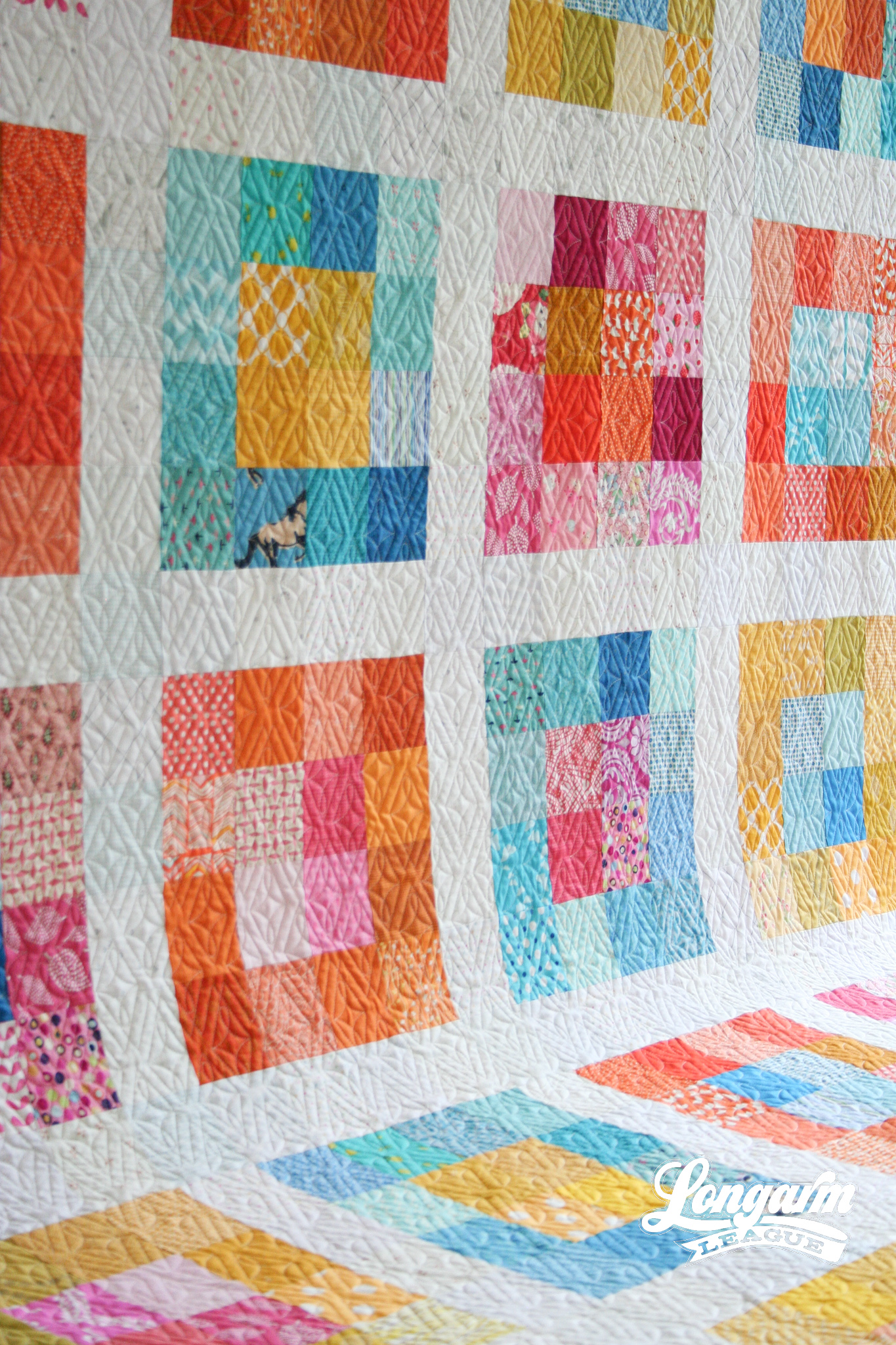
I originally planned to make a lot of ha...
SBDC and Other Small Business Resources

Each month in the Longarm League membership, we discuss a topic relevant to longarm quilting and business. This month, we are bringing to the forefront various organizations and resources that exist to help small business owners. These are organizations that may offer business consulting, webinars and other online courses, and in some cases mentorship.

SBDC
The Small Business Development Center (SBDC) provides free business consulting and at-cost or low-cost training to small businesses, entrepreneurs, and nonprofit organizations. The SBDC has been around since 1975, but its services have evolved over time as technology has changed the way people do business today. As a result of COVID, webinars, Zoom calls, and other online learning platforms have revolutionized the way we are able to learn regardless of our locale.
We chatted with Rebecca Mixson of the SBDC with the University of Georgia. Rebecca is a business consultant who works with business owners in all stages of business—...
Goth 2 Boss Digital E2E Quilting Design

I feel like I owe you an explanation for the name of this design. That will be coming soon.
But first, I thought I'd tell you the inspiration behind it. Back in December of 2021, Josh and I were watching the series called Landscapers that had recently premiered on HBO. It is based on a crime set in the 1990s in England. The series is visually moody, drab, and dark. There's a scene in an upstairs bedroom that had deep red, ornate wallpaper and I found myself asking Josh to stop and go back to a frame that showcased the wallpaper better.
This is what caught my eye.
While it's definitely not the same, this was my first sketch from the inspirational wallpaper:

After playing around with the design a number of times on my reMarkable tablet, I slowly let the feathers get plumper and more prominent as part of the design, allowing me to fill in the space more evenly while keeping the floral center.
Here's how the design evolved as I was sketching:
When it comes to feathers,...
Meet Jackie Lane of By the Block Quilting

Each month in the Longarm League, we hold a coaching call with one of our members to talk about their business. This month I sat down with Jackie Lane of By the Block Quilting to talk all things marketing. While League members have full access to that recording, we asked Jackie to share a little more about herself and her business with our blog readers.
Without further ado, let's meet Jackie...

Jackie Lane, By the Block Quilting
Located: Round Rock, TX
In business: Over 3 years
Machine and software: APQS Lucey with Quilt Path
In the Longarm League: Almost 1 year
Where to find Jackie
Website: https://www.bytheblockquilting.com/
Instagram: @bytheblockquilting
Best way for someone to contact you for quilting? Email me at [email protected]

Q&A
What services do you provide at By the Block Quilting?
Edge to Edge quilting, binding services, t-shirt quilts
Do you have any advice for someone just starting out with their business?
Join the Longarm League as soon as you start! I have h...
Mountain Rescue Quilt with Friends of P Quilting
We moved into our current house four years ago.
When looking for houses, we fully planned to buy a ranch style home. I had long imagined how I'd take-over a hefty part of a beautifully finished basement. Yes, I was preemptively greedy about this imaginary space.
But, when the house we'd mentally moved into sold before we were in a position to make an offer, I saw what ended up being "our house" online with its glass studio doors right off the living room, and I knew I could deal with another option. I'm trying to sound chill—the house was BEYOND what I ever envisioned for our family, so I was thrilled beyond belief.
I was so taken with the house and the sewing room that the lack of closet or storage space didn't even occur to me. Even after using the room for years, I still didn't think the lack of storage was an issue I could do anything about.
Until a few months ago...
I was scrolling Instagram and saw in Stories that Lindsey from Pen and Paper Patterns was giving details about her boo...
Top 20 Modern Edge to Edge Quilting Designs

Buying new digital pantograph designs is often as enticing as picking up a fat quarter—or ten!—at your local quilt shop. They can be oh-so-appealing, but which ones will you actually use the most in your business?
I can remember designs that I fell in love with and purchased on the spot, yet never actually used on a client’s quilt top. Conversely, there were several that I used over and over again, wringing every drop of value out of them. I developed my favorites based on ease of use and versatility. Of course, a longarm quilter's personal style and preferences can certainly play a part when making recommendations to clients, as well.
It’s been a while since I’ve quilted for others, so I thought it would be fun to ask other quilters what their current go-to pantographs are. I invited quilters from the Longarm League membership—along with other quilters who follow our social media accounts or subscribe to our email newsletter—to chime in with their current favorite edge-to-edge design...
Groove Digital Pantograph Design
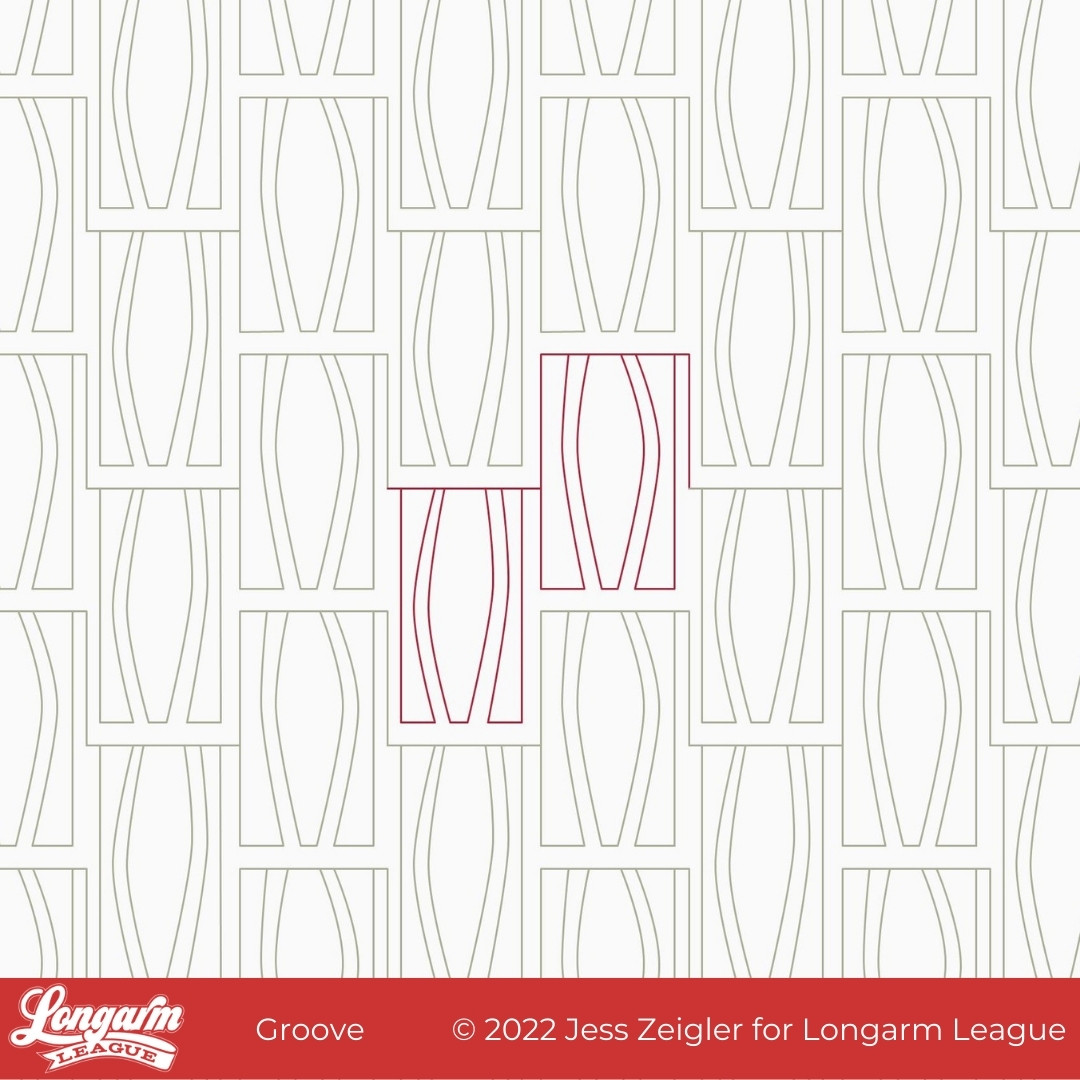
The inspiration for the Groove design came from the subtle curve of lava lamps. I really liked the idea of non-symmetrical, gentle curves contained within the straight lines and perpendicular angles that "house" the lava lamp shapes.
Do I detect a "mid-century modern" vibe here? It wasn't intentional but I also wouldn't be mad about that. Not one bit!
The orientation of the design is more of a vertical nature, which just doesn't seem to be as common with digital edge-to-edge options. Much like the 'positive', sometimes you want to ac-cen-tuate the vertical! 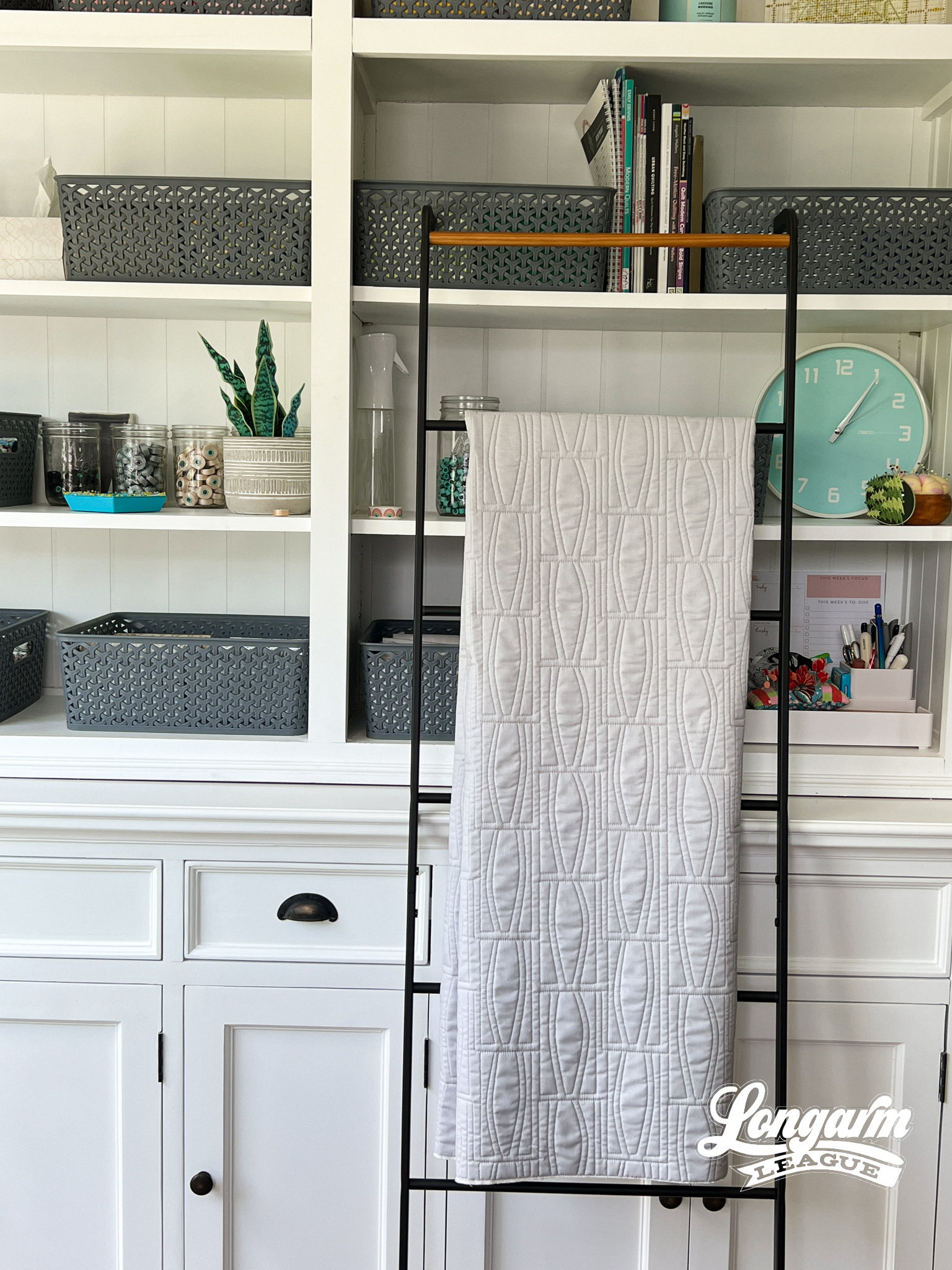
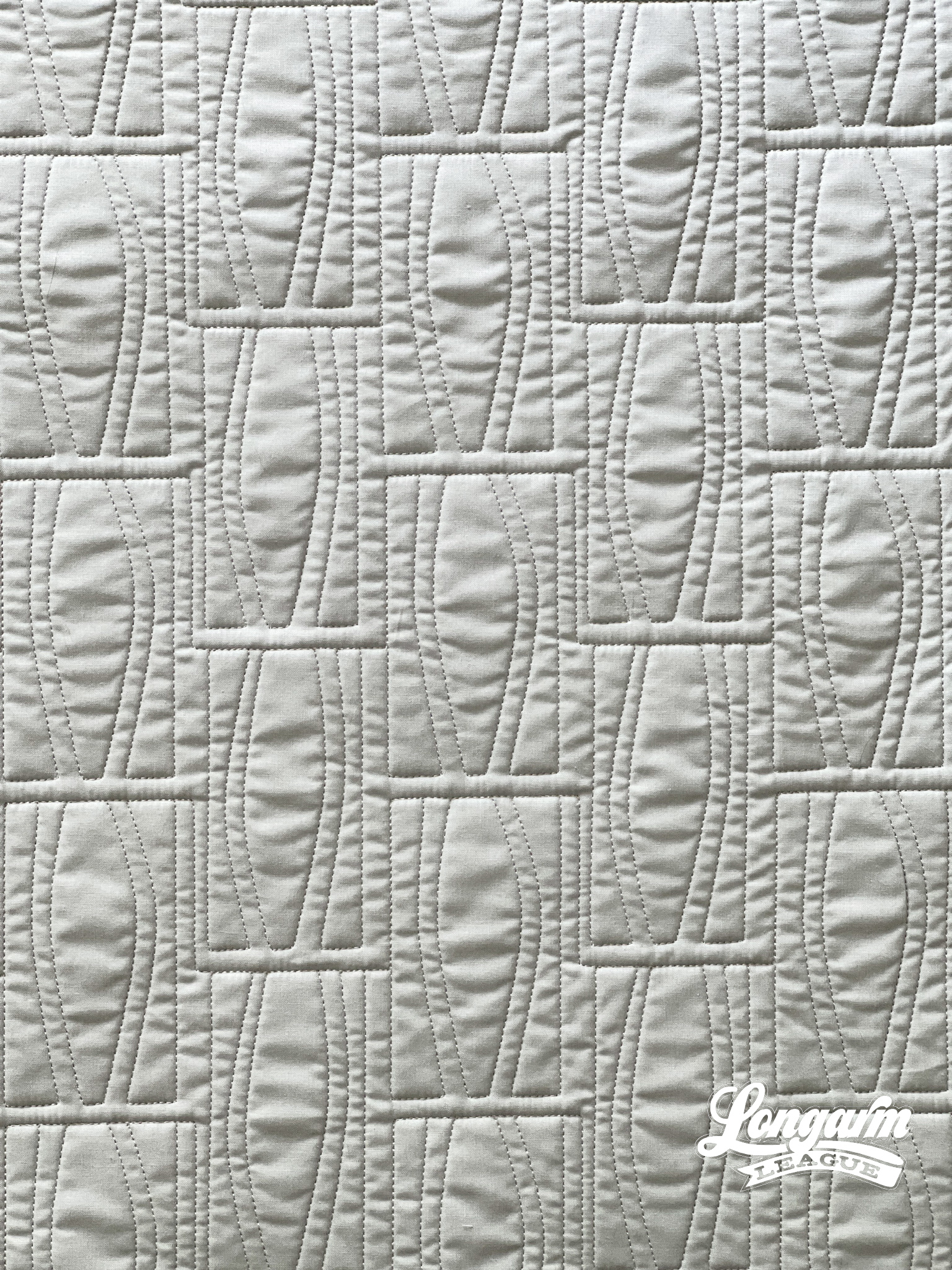
The repeated motif is staggered, meaning that when it comes to setting it up with your computerized system, you will not need to offset. Just close the gap between the rows and you'll be good-to-go. The stitch path can be viewed in the video at the top of this post. There is some backtracking, but overall it has a smooth and fluid stitch path.
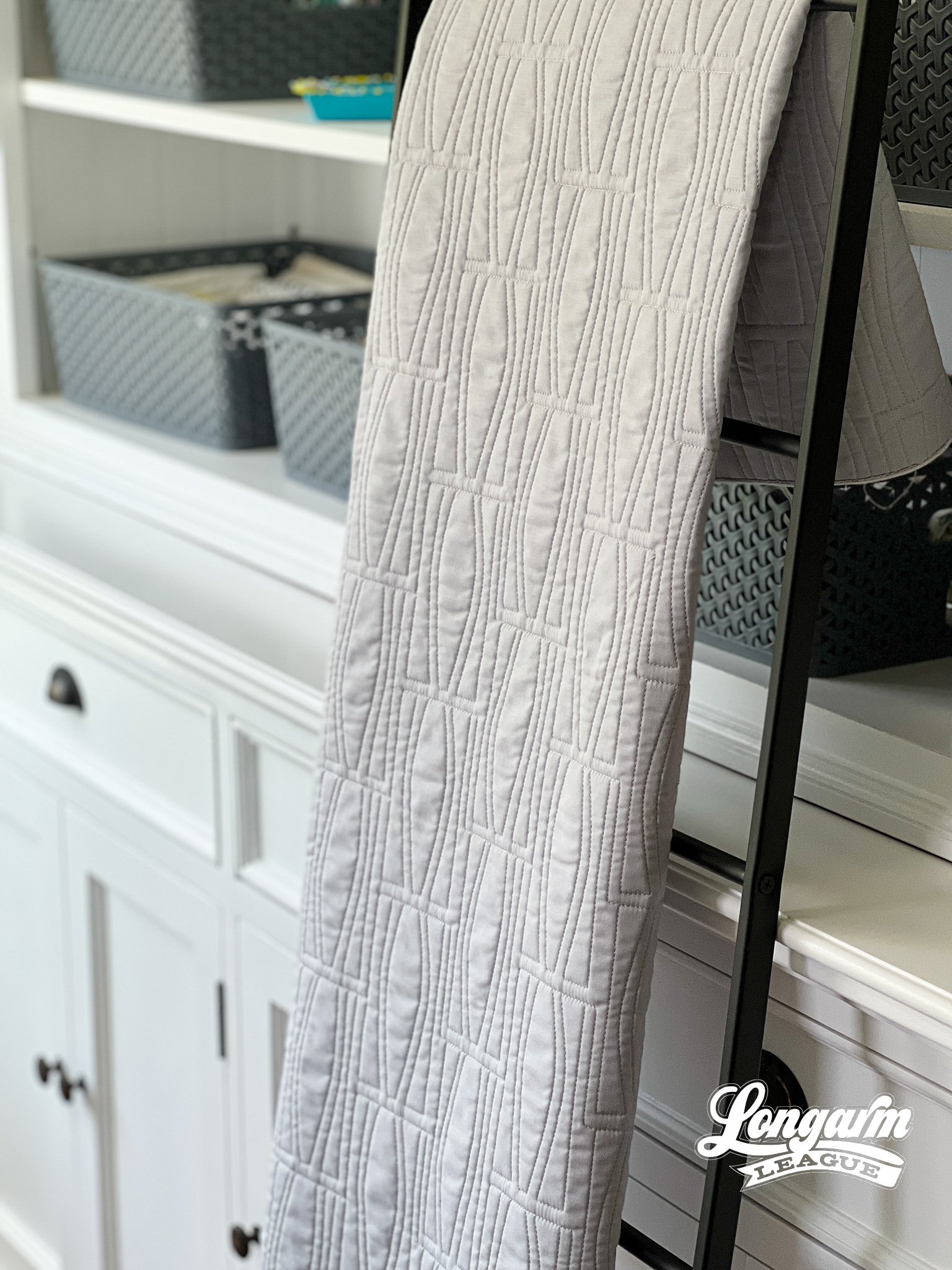

This design would be great on modern quilt tops or like I mentioned ear...
Blackbird Digital Quilting Design
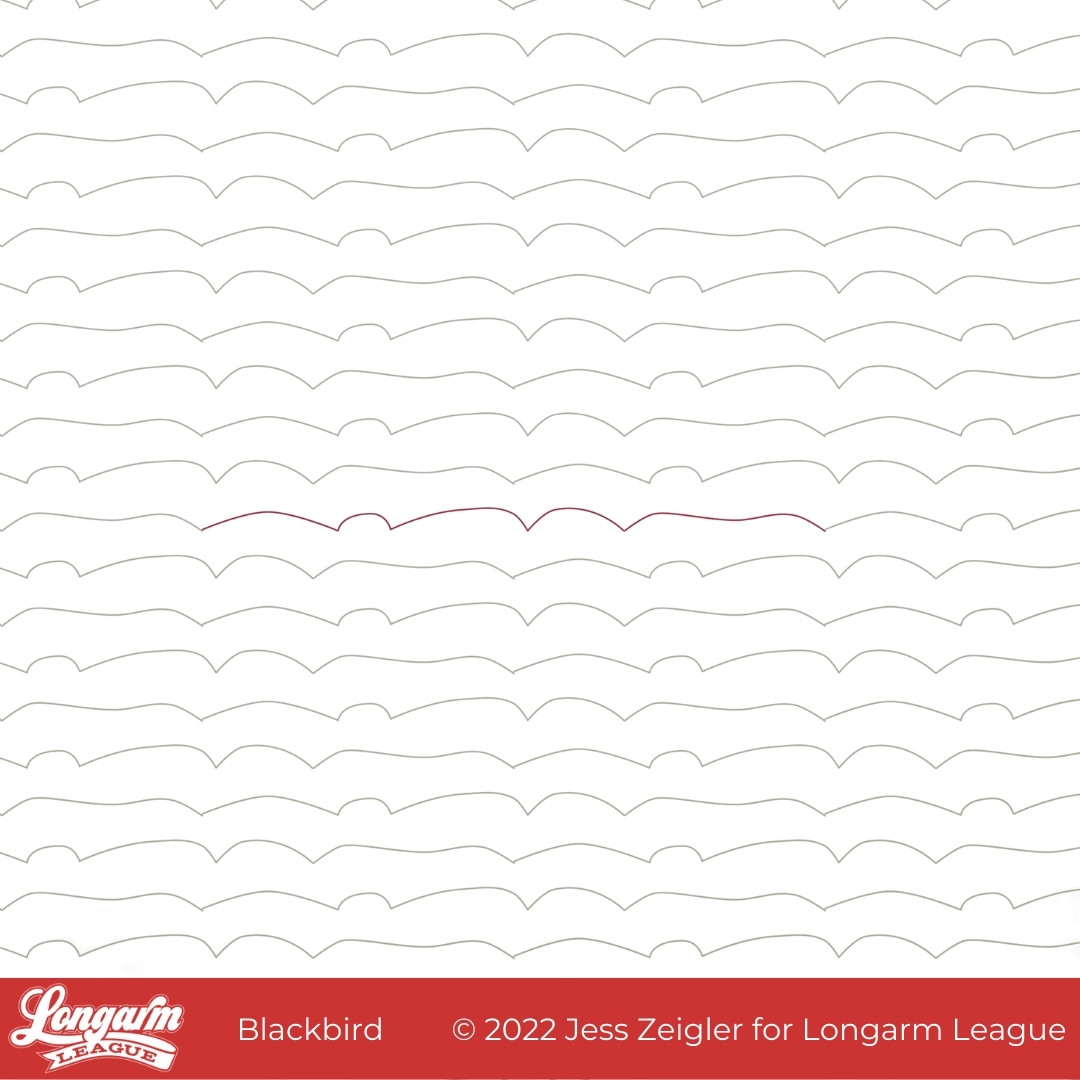
In our Longarm League private community, we have a forum where we can ask each other for pantograph suggestions for clients' quilts. Over and over again, I find myself recommending really simple designs like straight lines, Good Vibrations, Rumble, Wishbone, Soho, etc.
I wanted to make a REALLY simple design that also looked... organic. Blackbird is what resulted.
I simultaneously really like this one and am—what's the word, embarrassed?—by its simplicity.
Hey, they don't all have to be head-scratchers. You know, those designs that you have to stare at to find the repeat or are mesmerized by the complexity of the design. This one is pretty darn straightforward.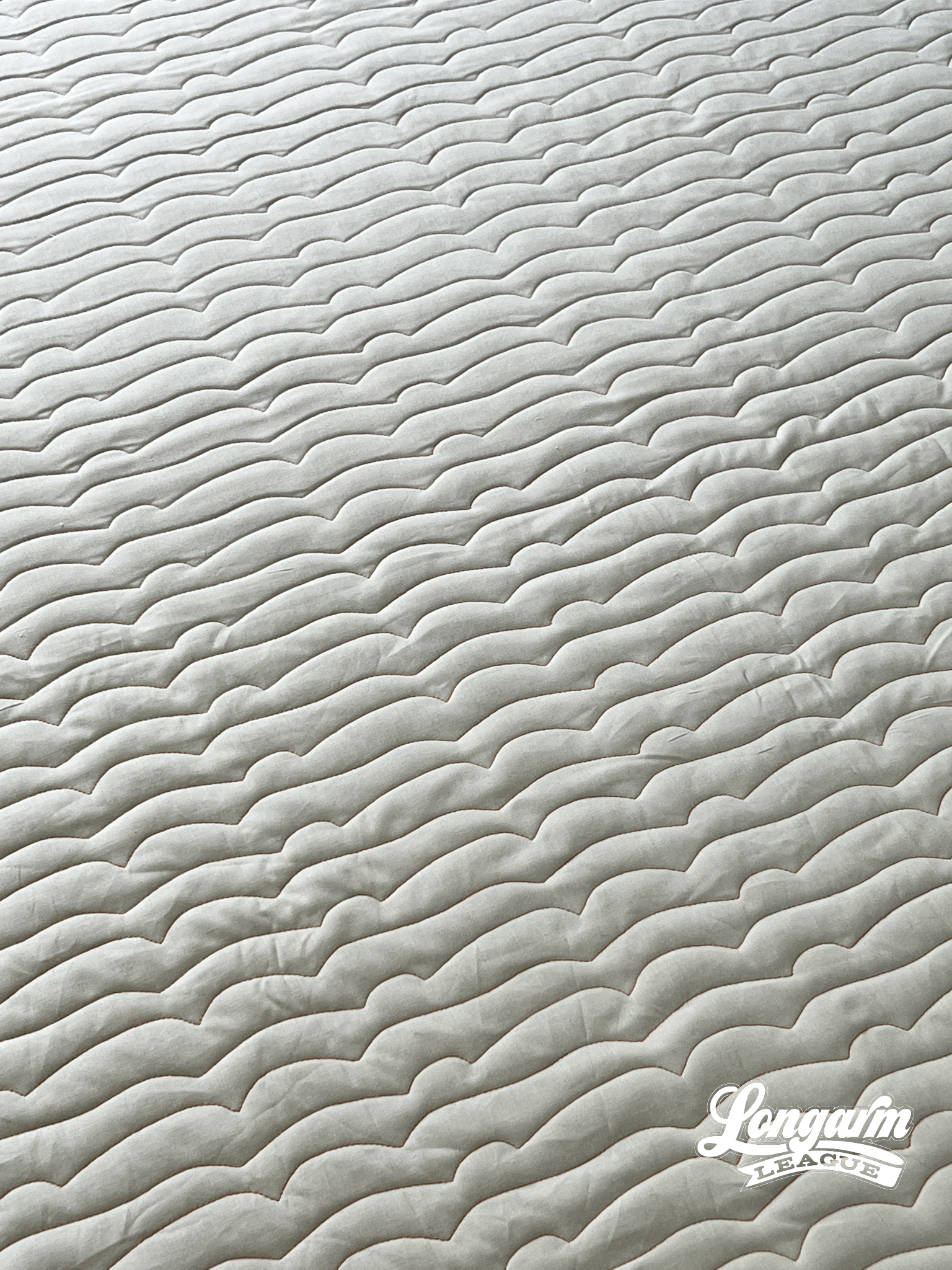
I'll give you four great reasons why we shouldn't shy away from offering simple designs to our clients:
1. FAST - I loaded up this up baby quilt and stitched it all out in an hour's time.
2. EFFICIENT - My machine uses the smaller L bobbins and this took less than one bobbin.
3. PROFITABLE - The faster and more...









